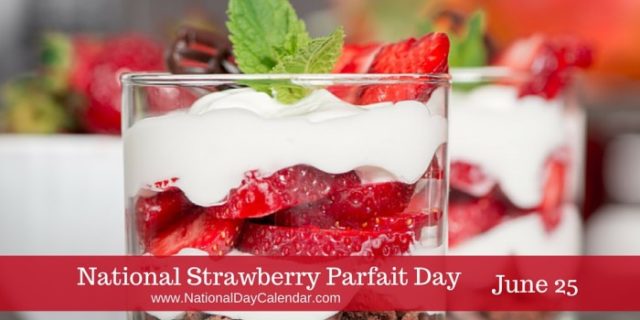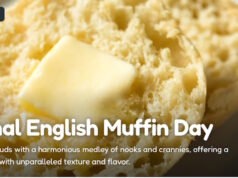
National Strawberry Parfait Day is observed annually on June 25.
Parfait is French for perfect. The traditional parfait is a dessert of ice cream or frozen custard layered in a tall glass stemmed glass with fruit and topped with whipped cream.
Today, the ice cream is often replaced with yogurt or pudding and additional layers of granola are added. Strawberries are in season during the month of June, so it is a good time for National Strawberry Parfait Day.
- Strawberries are the only fruit with seeds on the outside.
- The average strawberry has 200 seeds.
- The ancient Romans believed that strawberries alleviated symptoms of melancholy, fainting, all inflammations, fevers, throat infections, kidney stones, bad breath, attacks of gout, and diseases of the blood, liver and spleen.
- To symbolize perfection and righteousness, medieval stone masons carved strawberry designs on altars and around the tops of pillars in churches and cathedrals.
- In parts of Bavaria, country folk still practice the annual rite each spring of tying small baskets of wild strawberries to the horns of their cattle as an offering to elves. They believe that the elves, are passionately fond of strawberries, will help to produce healthy calves and an abundance of milk in return.
- Parfait refers to a frozen dessert made from a base of sugar syrup, egg, and cream. A parfait contains enough fat, sugar, alcohol and/or to a lesser extent air to allow it to be made by stirring infrequently while freezing, making it possible to create in a home kitchen without specialist equipment.
- The American parfait, is made by layering parfait cream, ice cream, and/or flavored gelatins in a tall, clear glass, and topping the creation with whipped cream, fresh or canned fruit.
- Although parfaits were originally served on decorative plates, today they are typically layered in tall, thin glasses.
- Origin of PARFAIT: French, literally, something perfect, from parfait perfect, from Latin perfectus.
Sources:












